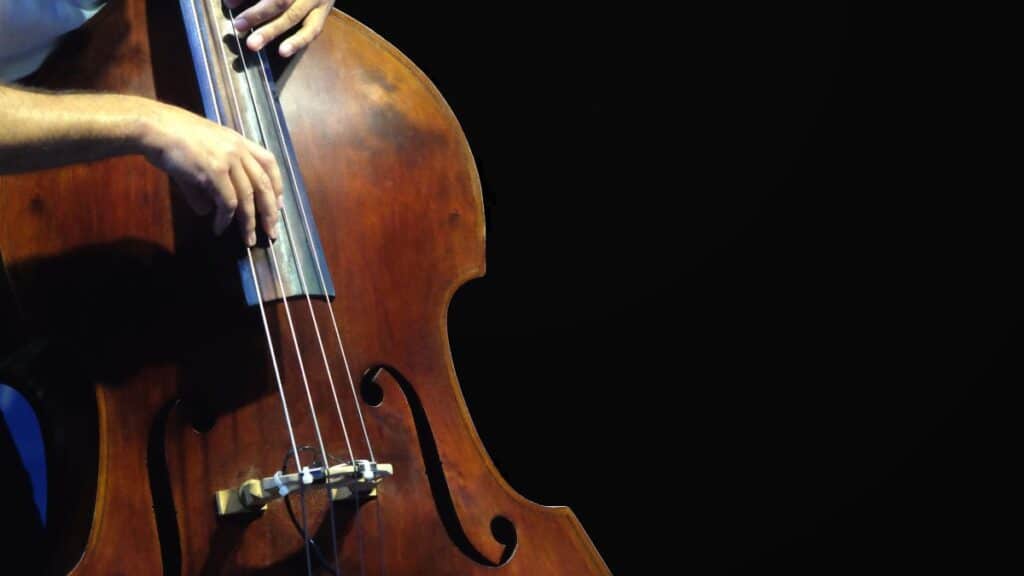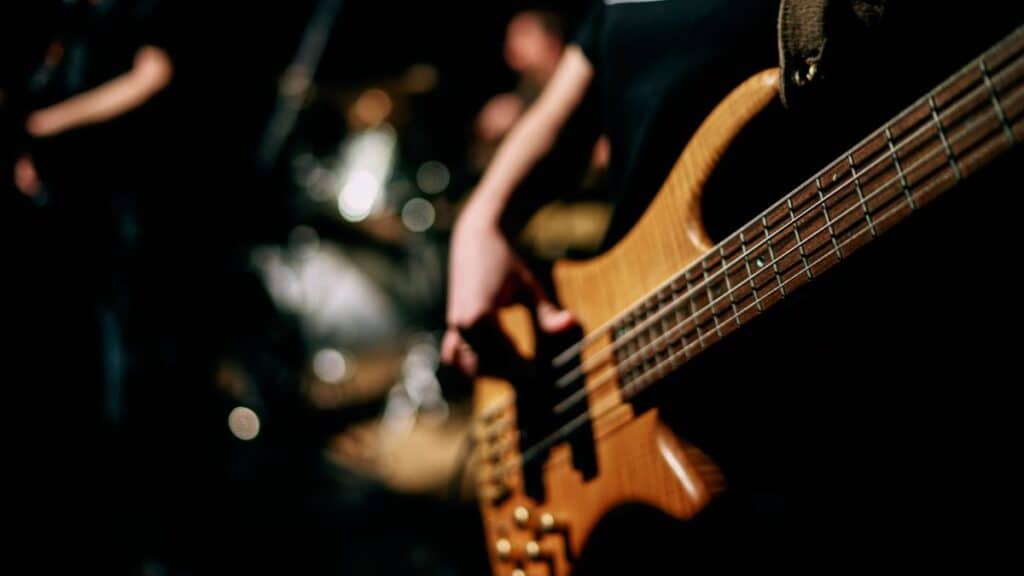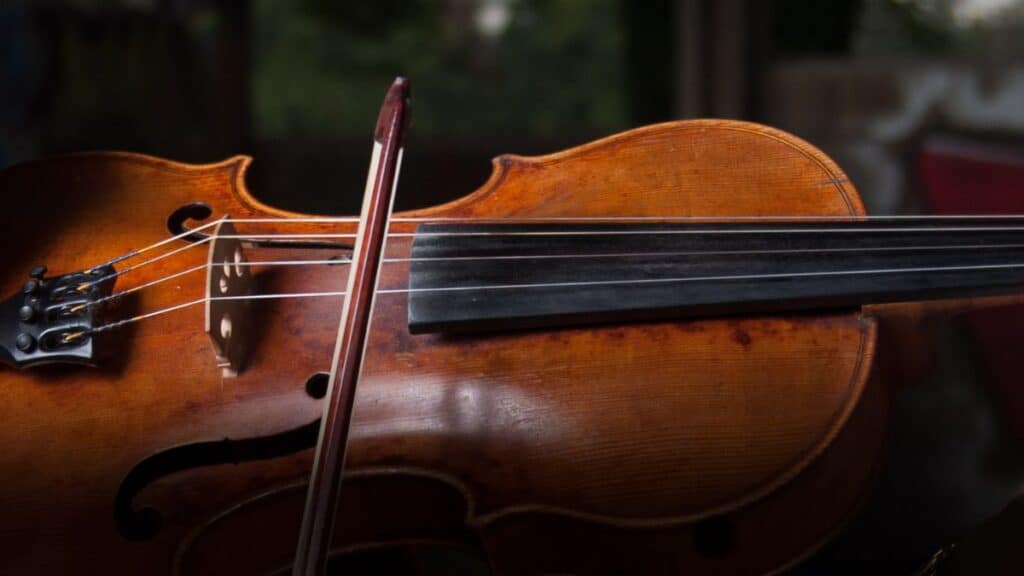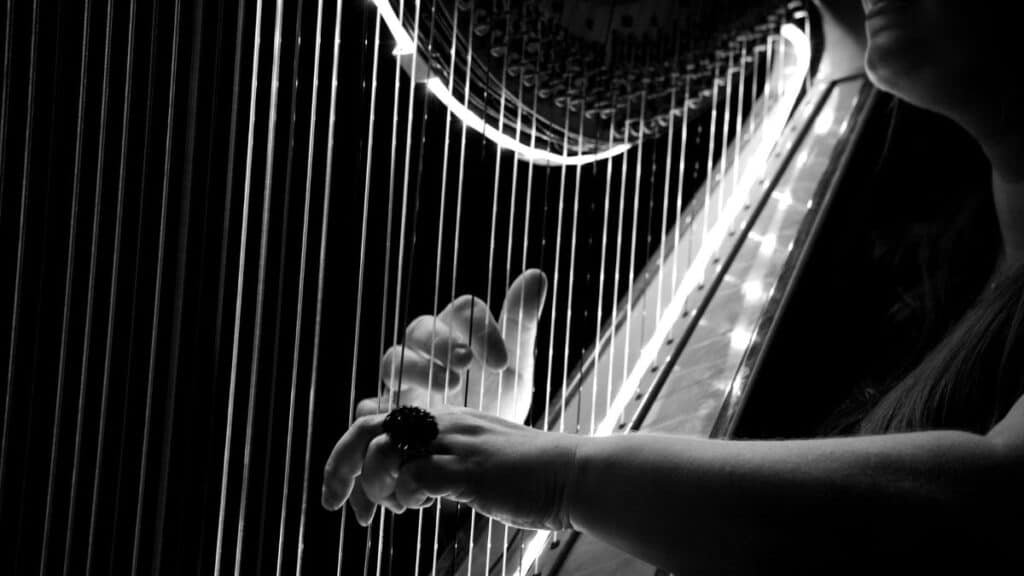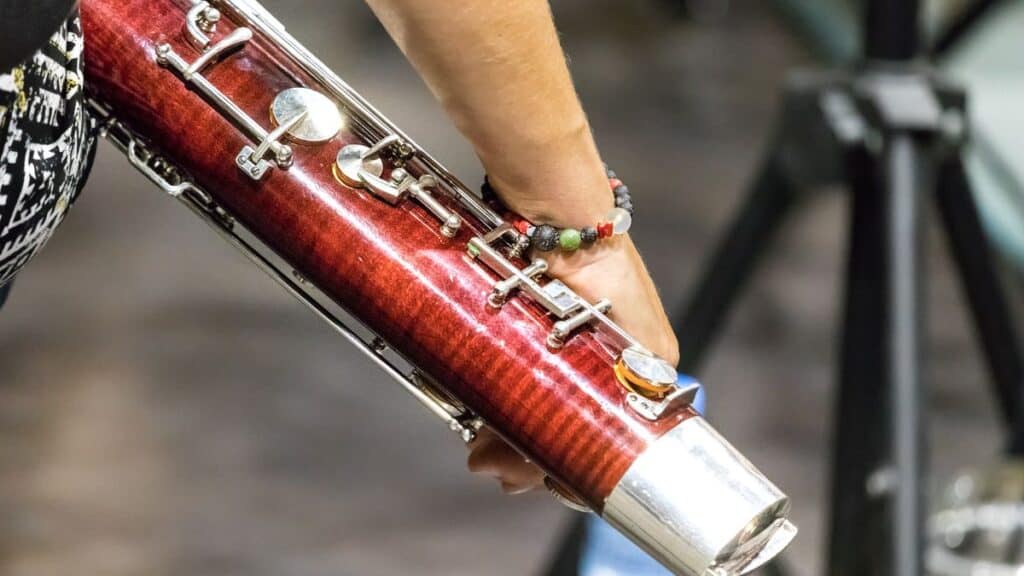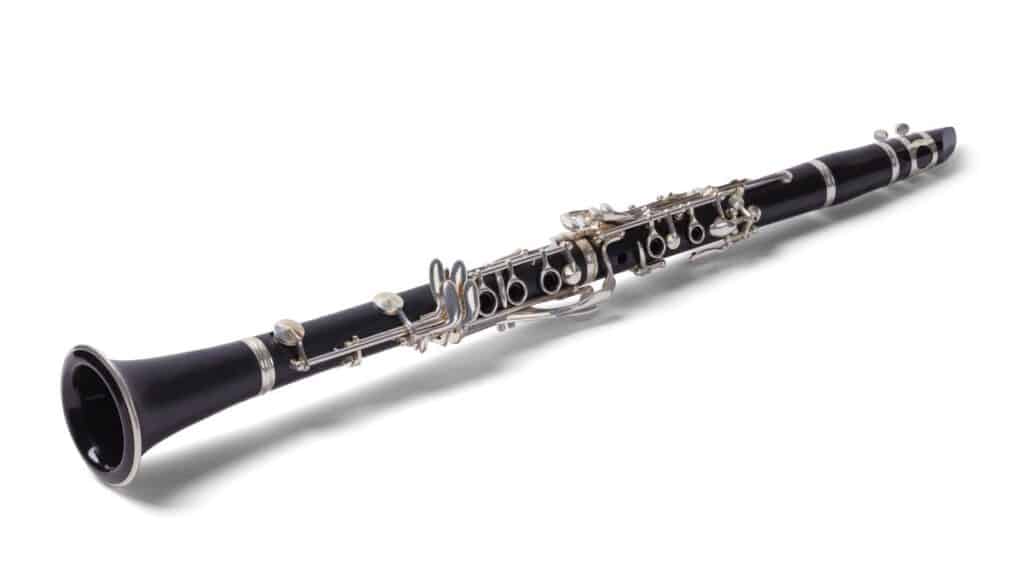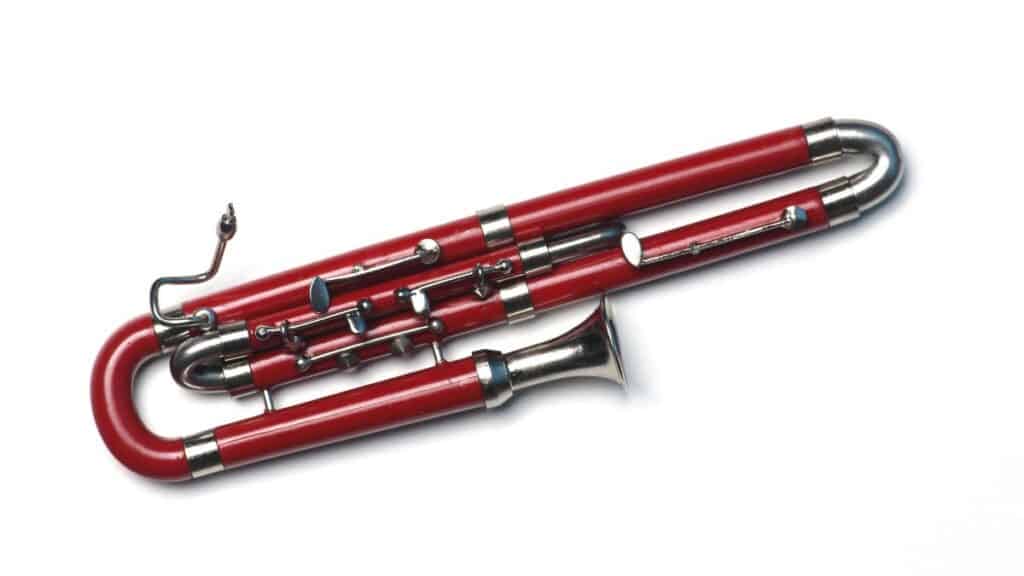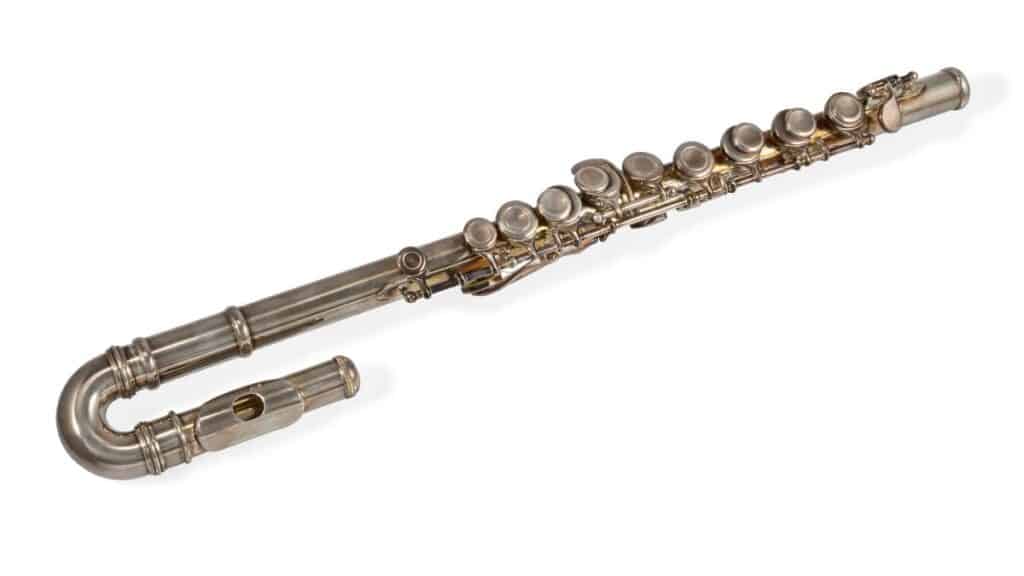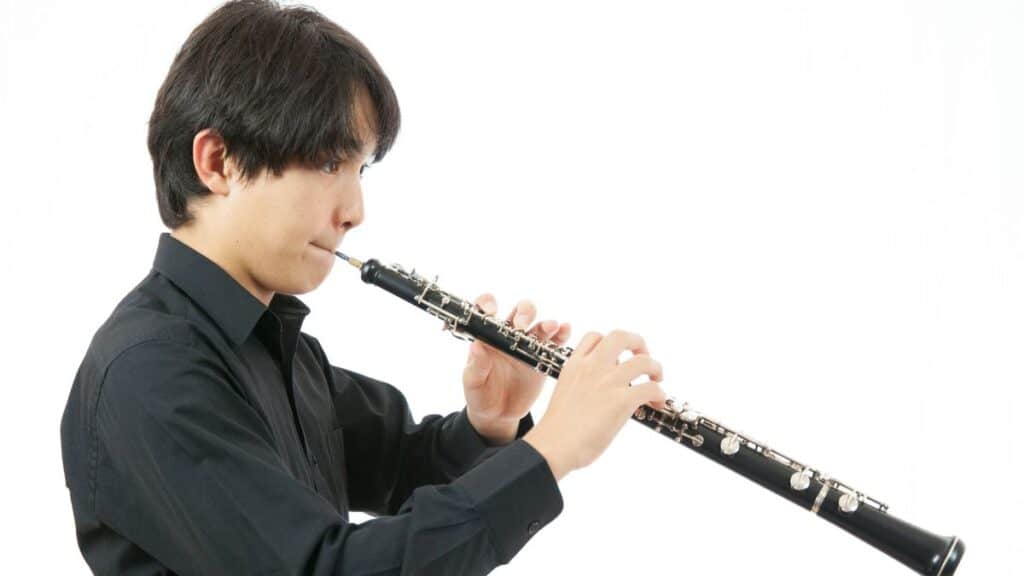There are many different musical instruments that vary across a wide pitch range. Some high pitch instruments like the violin or piccolo tend to be smaller in size while low pitch instruments are often much larger.
What Does Low Pitch Mean?
When it comes to music, ‘low pitch’ might seem like a somewhat elusive term. But let’s put it in a way that makes sense to all of us.
Think about when you’re relaxing outside on a sunny afternoon. You hear a bird singing in a tree nearby. That song is what we’d refer to as a high-pitched sound. In contrast, imagine the deep, resonant roar of a motorcycle engine revving up — that gives you an idea of what a low-pitched sound is.
In essence, pitch has everything to do with how high or low a sound feels to us, which comes down to the frequency of the sound waves. Sounds with high frequencies are perceived as high pitch, while sounds with low frequencies are perceived as low pitch.
In the more formal music world, when we discuss low pitch, we’re referring to sounds that sit at the lower end of the human hearing spectrum. That includes instruments like the double bass or the tuba, for instance.
Before exploring the most popular low pitch musical instruments, it is first important to understand Hertz (Hz) and how pitch is measured.
How is Musical Pitch Range Measured?
Just as we use a ruler to measure the length of an object, or a clock to tell the time, in the realm of music, we measure pitch in terms of frequency. But what is frequency, you ask?
Well, frequency, measured in Hertz (Hz for short), is essentially the speed at which a sound wave vibrates. Think of it like ripples in a pond after you’ve thrown a pebble. The faster the ripples move, the higher the frequency.
In music, a higher frequency translates to a higher pitch, and a lower frequency results in a lower pitch. It’s all a part of the grand symphony of physics and music dancing in harmony.
Now, here’s where it gets interesting. In Western music, we use the standard called ‘A440,’ meaning the ‘A’ note above ‘middle C’ on your piano vibrates at 440 Hz, considered a high-pitched sound. As we move down the keyboard, the frequencies (and thus, the pitches) get lower.
And there you have it! That’s the down-low on how we measure musical pitch. It’s a little like music’s own language of numbers and sounds, coexisting to create the tunes we know and love. This is the basics behind determining what defines a low pitched instrument or high pitched instruments.
With an understanding of pitch and some music theory, let’s explore some low pitched instruments.
The Lowest Pitched Musical Instruments by Class
Each set of low pitched instruments is separated into classes to help with an understanding of standard orchestral instruments and where they belong.
Low Pitch String Instruments
Now that we have our heads around the concept of pitch, let’s talk about some of the star players in the world of low-pitched sounds — stringed instruments.
Double Bass
Also known as the contrabass or upright bass, this giant among string instruments stands tall at the low end of the orchestral range. With its deep, resonant notes, the double bass brings a rich foundation to many forms of music, from orchestral to jazz.
Cello
A step up in pitch from the double bass, this string instrument is known for its warm, mellow sound. It has a wide range for a stringed instrument, but it truly shines when playing those soulful, low-pitched melodies.
Bass Guitar
You might find this one front and center in rock bands or jazz ensembles. The bass guitar is a stringed instrument that is often tuned an octave lower than a regular guitar and is crucial for laying down that groovy, low-pitched backbone in many types of popular music.
Viola
Although the viola is often overshadowed by its higher-pitched cousin, the violin, don’t underestimate this versatile instrument. While it can play mid-range tones, it’s also capable of producing some beautifully melancholic low-pitched sounds. It resides in the violin family of musical instruments but has a lower pitch range and is larger than a violin.
Harp
Now, here’s a surprise contender. The harp might be known for its ethereal high tones and high pitches, but with its range of several octaves, the larger concert harps can produce a rich tone that is impressively low-pitched, adding depth to the instrument’s sound palette.
Each of these instruments brings its unique flavor to the musical table by producing lower pitches and providing large pitch range.
Whether it’s the rumbling undertones of a double bass or the soulful low notes of a cello, these low-pitched string instruments have an important role to play in the symphony of sound – which brings us to our next ensemble, the woodwind family of musical instruments.
Low Pitch Woodwind Instruments
Let’s take our exploration of low pitch a step further and venture into the captivating world of woodwind musical instruments. These gems have a charm all their own when it comes to producing those deep, mellow tones.
Double Bassoon
This musical instrument is often regarded as the ‘bass’ of the woodwind family, producing warm and lower tones that add depth to orchestral pieces. Don’t be fooled by its comical appearance; the double bassoon produces low-pitched notes that bring a serious level of resonance.
Bass Clarinet
The bass clarinet is like the bass guitar of the woodwind family. With a tonal range that dips even lower than the bassoon, this woodwind instrument provides a full-bodied, mellifluous sound that adds depth to an ensemble’s performance.
Grouped in here is also the contrabass clarinet and while it is not typically seen in many orchestras due to the size, it can reach deep tones and different notes all the way down to 55 Hz. The unwieldy size and unique shape of the contrabass clarinet can reach up to 10 feet.
Baritone Saxophone
This member of the saxophone family is known for its soulful, low-pitched voice. With its unmistakable rich and velvety tones, the baritone sax is often a favorite in jazz and pop music.
Contrabassoon
Often referred to as the ‘grandfather’ of the woodwind instrument family, the contrabassoon produces the lowest pitches of them all. Its deep, growling tones are unrivaled in their capacity to produce a low pitch sound with a sense of depth and gravitas.
Bass Flute
While flutes are typically associated with higher pitches, the bass flute — larger and longer than its more common cousin — is capable of producing beautiful, low-pitched melodies. Its sound is hauntingly ethereal, adding a unique touch to any piece of music.
Bass Oboe
This rare gem among woodwind instruments stands out with its deeply resonant tones and exceptionally low pitch range. Larger and lower in pitch than the regular oboe, the bass oboe produces a rich, mellow sound that adds a unique color to the musical spectrum.
Although the bass oboe is not commonly found in standard orchestral compositions, when called upon, it brings a special depth and texture that can truly elevate a musical piece. Its unique, haunting timbre serves as a bridge between the woodwind and brass sections, underscoring the harmonic structure with a hint of mystique.
From the low pitch notes of the contrabassoon to the smooth notes from the bottom pitch range of the bass flute, these low-pitched woodwind instruments add a layer of sonic depth that enriches the tapestry of musical expression.
Now, let’s explore brass instruments with low pitches.
Low Pitch Brass Instruments
Now, let’s delve into the world of brass instruments. Known for their powerful, resounding notes with deep notes, these heavy-hitters truly shine when it comes to low pitch.
Tuba
This brass instrument is the titan of the brass family, delivering the lowest pitches of all. Its rich, robust notes form the foundation of many a brass ensemble, marching band, and orchestra. When a tuba player hits the lowest note, it certainly can be felt through your body.
Normal tubas can hit as low as 45Hz and a bass tuba can hit even lower frequencies being able to range all the way down to 29 Hz.
Bass Trombone
This instrument, a larger version of the tenor trombone, brings a whole lot of bass to the party. Its wide bore and large bell give it a deep, resonant sound that provides a firm grounding in any brass section.
Euphonium
Often mistaken for a small tuba, the euphonium offers a smooth, mellifluous tone in the lower brass range. Its warm and rich sound is a favorite in band compositions and brass ensembles.
Baritone Horn
This instrument, not to be confused with the euphonium, is a key player in the low brass section. With a mellower sound than its brass counterparts, it’s often used for harmonies and accompaniment in band settings.
Sousaphone
Think of the sousaphone as the tuba’s big brother, designed specifically for marching bands. With its large, circular shape and forward-facing bell, it produces deep, booming notes that can be heard over other instruments in outdoor settings.
From the commanding notes of the tuba to the vibrant undertones of the sousaphone, these low-pitched brass instruments lend depth and weight to any musical arrangement, making them indispensable members of the musical family.
Low Pitch Percussion Instruments
Finally, let’s turn our attention to percussion instruments. These rhythmic cornerstones of music can also produce some deeply resonant, low-pitched sounds that bring a strong foundation to any musical piece.
Bass Drum
The bass drum is the heartbeat of a percussion ensemble. Whether in a marching band, a drum set, or an orchestra, its deep, resonant boom provides a rhythmic foundation and drives the beat forward.
Timpani
Also known as kettle drums, timpani can produce a variety of pitches, but are particularly loved for their rich, low tones. These copper bowls with drum heads are tuned to specific notes, adding depth and dramatic flair to symphonic pieces.
Gong
This large, flat metal disc, when struck, releases a deep, resonant tone that reverberates with a rumbling richness. Used in both orchestral music and certain traditional Asian music, it adds an element of grandeur and gravity.
Tubular Bells
Also known as chimes, these tuned metal tubes can be quite large and, when struck, emit deep, rich notes. They’re often used to create an ethereal or solemn atmosphere in orchestral music.
Marimba
This might come as a surprise, but a marimba, particularly a bass marimba, can hit some impressively low pitches. This wooden keyboard percussion instrument is known for its warm and resonant tones, which add a distinctive character in various musical settings.
These low-pitched percussion instruments, each with their unique tone and resonance, provide the rhythmic and sonic backbone of many musical compositions, contributing to the rich tapestry of sounds that make up our beloved musical landscape.
Other Notable Low Pitch Musical Instruments
There are some additional instruments that should be noted when it comes to producing the lowest pitch in an ensemble.
Pipe Organ
Let’s shine a spotlight on a true titan of low pitch—the pipe organ, often called the ‘King of Instruments.’ This grand beast delivers some of the deepest notes we can hear—and feel!
Each organ pipe produces sound at a different pitch, and the principle is simple: the longer the pipe, the lower the note. The largest pipe organs boast pipes over 30 feet long, capable of sounds as low as 16 Hz—a rumble more felt than heard.
The pipe organ’s power lies in its range and capacity for depth. It can fill a cathedral with a profound resonance, creating a sonic experience that’s truly unmatched. So, in the symphony of low-pitched instruments, the pipe organ holds a place of honor, showing us just how impactful and moving these deep sounds can be.


